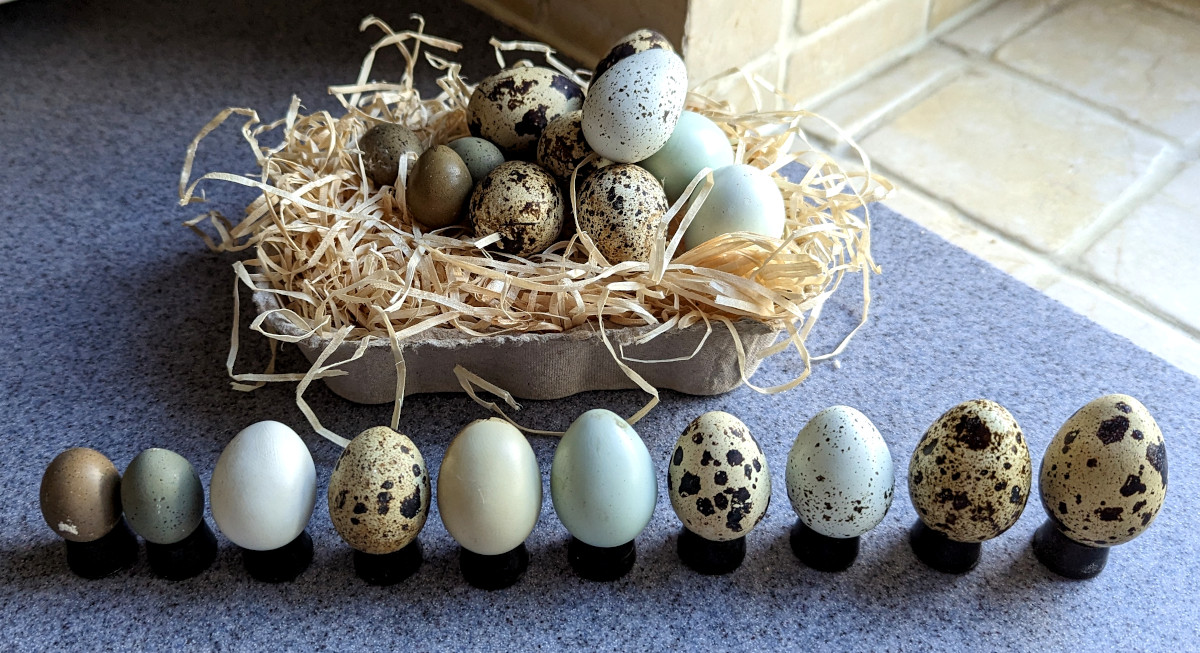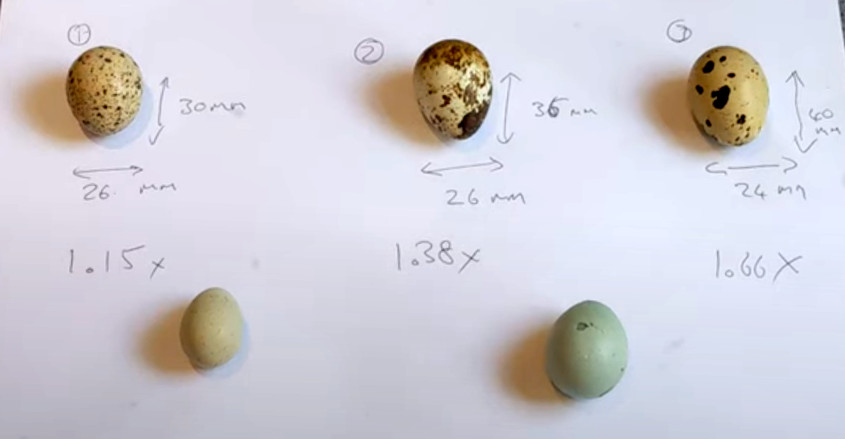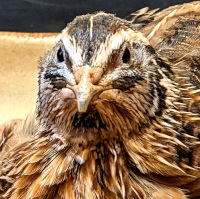Selecting quail eggs for incubation. Tips on how to choose the best hatching eggs.

A good choice of quail egg can mean the difference between a good hatch and a bad one.
Quail eggs that are destined to be incubated should be from well fed, stress free parent stock and be an even size and free from blemishes, cracks and malformations.
Do not choose quails eggs that are cracked, too round, too pointy or that have any obvious defects.
Candle the eggs you are choosing to make sure there are no obvious faults in the shell or that they have detached air cells.
Below: Showing how I select my quail eggs for the incubator.
When choosing quail eggs for incubation, there are a few things to keep in mind:
- Quality of the parent stock: Well fed and cared for adults will lay better eggs.
- Age: Eggs should be no more than 7 days old when they are incubated. Older eggs may still hatch, but the hatch rate will be lower.
- Size: Eggs should be of a uniform size. This will help to ensure that they all develop at the same rate.
- Shape: Eggs should be oval-shaped and free of deformities and be 1.4 times longer than they are wide.
- Shell: The shell should be smooth and free of cracks.
- Weight: Eggs should be of equal weight. This will help to ensure that they develop at the same rate and hatch together.
- Get your eggs from a reputable source. This will help to ensure that the eggs are fertile and healthy.
- Avoid eggs that have been washed. The natural coating or bloom on the outside of the egg helps to protect it from bacteria.
- Store the eggs in a cool, dry place. The ideal temperature for storing eggs is 55-65 degrees Fahrenheit.
You should regularly assess your quail eggs for quality and test the contents and the shell to see they come to minimum standards.
Below: How to choose quail eggs that are the correct shape. Eggs should be about 1.4 times longer than they are wide.

Once you have selected your eggs, it is important to prepare them for incubation. This involves cleaning the eggs if necessary and marking them with an "X" and an "O" on opposite sides.
With a little care and attention, you can choose the right quail eggs for incubation and successfully hatch healthy chicks.
